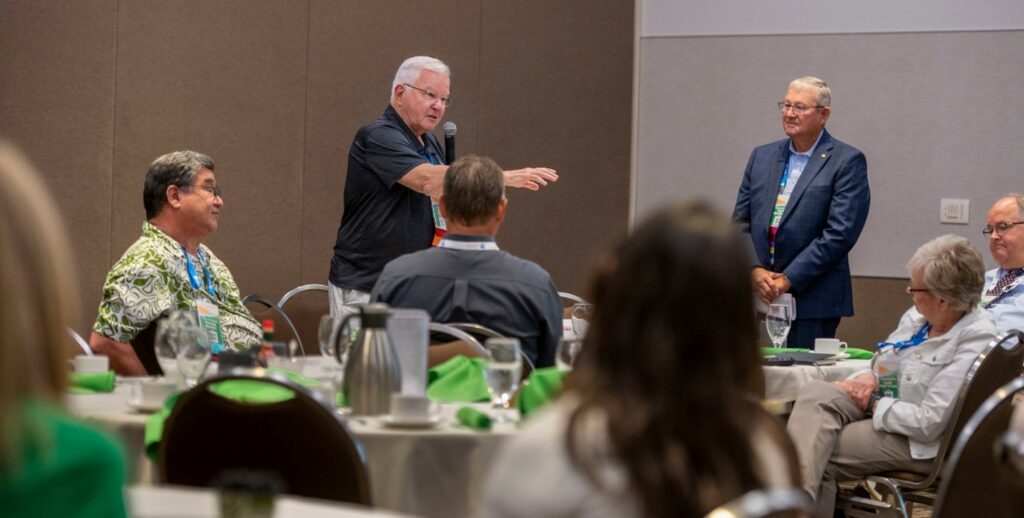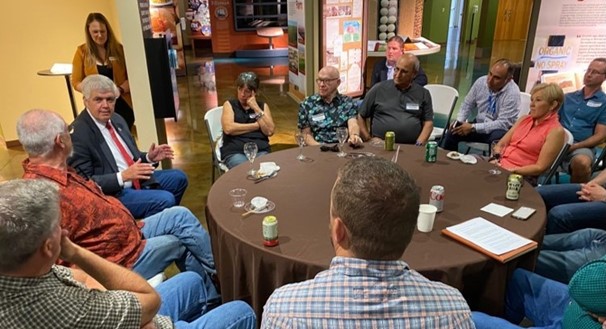Drought, Extreme Weather Events and Other Climate Risks & Challenges to Energy Generation and Infrastructure in the West
Disruptive and destructive impacts on infrastructure are accelerating. Depending on where you are in our nation, too much heat, freezes, flood, drought, storms with higher velocity winds, and melting permafrost is already here and likely to occur faster than traditional infrastructure planning cycles can handle. The western energy grid is at elevated risk this summer, meaning that drought and extreme heat threaten reliable power generation, and capacity shortfalls and transmission trouble are likely. To protect energy infrastructure, we must recognize that the built environment was designed for a climate that no longer exists and takes steps to build resiliency into our infrastructure.
Nationwide, more than 70 percent of the 1,100 gigawatts of U.S. power plant capacity requires cooling, and half of that supply comes from fresh surface water. All told, power plants use almost half of all the freshwater used nationwide. The operation of these water-cooled power plants can be curtailed if water levels in reservoirs, lakes, or rivers drop too low or if discharges of heated water from these plants raise water temperature too high.
Climate impacts on water infrastructure include stronger storms and flooding, sea-level rise and storm surges, more frequent and severe drought, saltwater intrusion, and degraded source water quality. These impacts pose water management challenges; for example, U.S. dams and levees need billions of dollars of repairs to make them safe for the conditions of the previous century, not current or future projected climate conditions.
Energy assets in need of defense from climate change include Generation (coal, natural gas, nuclear, geothermal, hydro, wind, and solar), Electricity Transmission and Distribution (substations, transformers, transmission lines, distribution feeders, and towers), Natural and Liquid Gas Transmission and Distribution (compressor stations and pipelines), Control Centers (electric, natural and liquid gas), and Energy Storage (pumped hydro, compressed air, battery, and hydrogen).
Planning methods are proving inadequate to defend these assets. An alternative framework for protecting assets would be to:
1) Prioritize infrastructure assets for defense based on their importance to or (in the case of failure) consequences to national security, the economy and public health.
2) Perform a predictive risk assessment on the assets, considering physical climate risks and geo-temporal climate models.
3) Include an interdependency analysis of the asset(s), which considers the affected resources (no power for hospitals, national command centers, gas stations) and the hazards created by a climate-caused failure or destruction of the asset(s).
4) Consider the resilience measures and functional adaptions needed to protect the asset(s). The framework concludes with a cost-benefit analysis to guide decision-makers in identifying the energy infrastructure assets that must be protected first and best.
We cannot protect everything, but if asset protection, functional adaptation, and siting selections are based on what matters most, we will make the best use of scarce resources.
Resources:
Drought, Extreme Weather Events and Other Climate Risks & Challenges to Energy Generation & Infrastructure in the West
Presenter:
Andrew Bochman
Senior Grid Strategist Idaho National Laboratory
Non-Resident Senior Fellow
Atlantic Council’s Global Energy Center
Heat Pump Technology
Today, we have various options and technologies to heat and cool our living and working environments. As we experience more heat and cold in our climate, reliable sources of heating and cooling are needed more than ever. Geothermal Heat Pumps offer a renewable, efficient option to homeowners and builders.
Geothermal heat pumps take advantage of the nearly constant temperature of the Earth to heat and cool buildings. Even though our climate changes with the seasons, a few feet below Earth’s surface, the ground temperature remains relatively constant, between 50 and 60 degrees Fahrenheit. This temperature is warmer than the air above it and cooler in the summer.
A geothermal heat pump uses this by exchanging heat with the Earth through a ground heat exchanger. The heat exchanger is a series of pipes called a loop buried in the shallow ground near the building. A fluid – usually water or a mix of water and antifreeze – circulates through the pipes to absorb or release heat within the ground.
In the winter, the heat pump removes heat from the heat exchanger and pumps it into the indoor air delivery system, moving heat from the ground to the building’s interior.
In the summer, the process is reversed, and the heat pump moves heat from the indoor air into the heat exchanger, effectively moving the heat from indoors to the ground. The heat removed from the indoor air during the summer can also be used to heat water, providing a free source of hot water.
Geothermal heat pumps have many benefits as a renewable energy source because they:
Use much less energy than conventional heating systems, since they draw heat from the ground Are more efficient when cooling your home Save energy and money Reduce air pollution Are suitable for all areas of the United States.
Presenters:
Achilles Karagiozis
Building Technologies and Science Center
Director, National Renewable Energy Laboratory
Jon Winkler
Senior Research Engineer National Renewable Energy Laboratory
The post Energy & Environment Committee Session Recap appeared first on CSG West.




